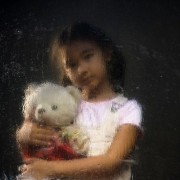 Photo: Getty Images
Photo: Getty Images
People call them “butterfly children” because their skin is so easily damaged. Even mild traumas can cause painful blistering. Epidermolysis bullosa (EB) is a rare inherited skin disorder that impairs the body’s ability to make collagen and keratin. It is believed to affect one out of every 50,000 births. There are approximately 10,000 adults and children in the U.S. who suffer from EB. The majority of them have EB simplex, which causes blistering on their feet and hands.
There are three main forms of EB. Each has different symptoms and varying degrees of severity as well as sub-types that exist within each form. A person born with one form of EB will not go on to develop one of the other forms.
• Simplex EB-blisters occur primarily on the feet and hands in response to friction. Walking even short distances can set off the formation of blisters. The condition is worse in hot weather and blisters may also develop in the mouth or on other skin surfaces from tight clothing.
• Dystrophic EB-involves generalized blistering all over the body and webbing deformities of the fingers or toes as well as nails malformations. Severely affected individuals have eye involvement, growth retardation and anemia.
• Junctional EB-is a severe form of EB that also affects the skin internally in the body along the GI, urinary and respiratory tract. Infants born with junctional EB often do not survive due to overwhelming infections from opened blisters. People with junctional EP also can develop deformities of their fingers and fingernails and alopecia may occur.
All people with EB have impairments in how the layers of their skin are anchored together. The thin outer layer of the skin, the epidermis and the middle layer, the dermis are normally connected to each other with collagen filaments and anchoring fibrils. People with EB inherit from either one or both parents a genetic defect that impairs their body’s ability to make these protein-based connections.
Treatments:
The main focus for EB patients is the care of their wounds and prevention of infection. Special skin wrapping techniques can help guard the skin without the use tape, which can cause further damage. Whirlpool baths to remove crusting and topical antibiotic ointments applied afterward help prevent infection.
Apligraf, a special skin graft of bioengineered skin that does not have immune cells has been used since there is no risk of rejection.
Stanford Medical Center is working on a gene transfer technique for recessive dystrophic epidermolysis bullosa (RDEB) patients to aid in their ability to produce missing needed proteins.
People with EB also have a higher risk of skin cancer so close monitoring is needed.
One important therapy people with EB need is understanding. Children with EB need to be accepted by their peers as simply different due to their skin fragility but EB does not affect their intelligence or a desire for friends.
Additionally, simple actions we take for granted such as buttoning a shirt, swallowing food or even friction from sitting on a toilet can cause skin damage to an EB person so there must be special care taken during everyday activities. Science is working on a cure through gene research and use of transplant grafts but until then, increased awareness of these people will help improve their lives.
sources:
http://www.nlm.nih.gov/medlineplus/ency/article/001457.htm
http://www.ebinfoworld.com/abouteb.htm
http://emedicine.medscape.com/article/1062939-overview
http://www.epidermolysis-bullosa.com
Michele is an R.N. freelance writer with a special interest in woman’s healthcare and quality of care issues. Other articles by Michele are at www.helium.com/users/487540/show_articles





Add a CommentComments
There are no comments yet. Be the first one and get the conversation started!